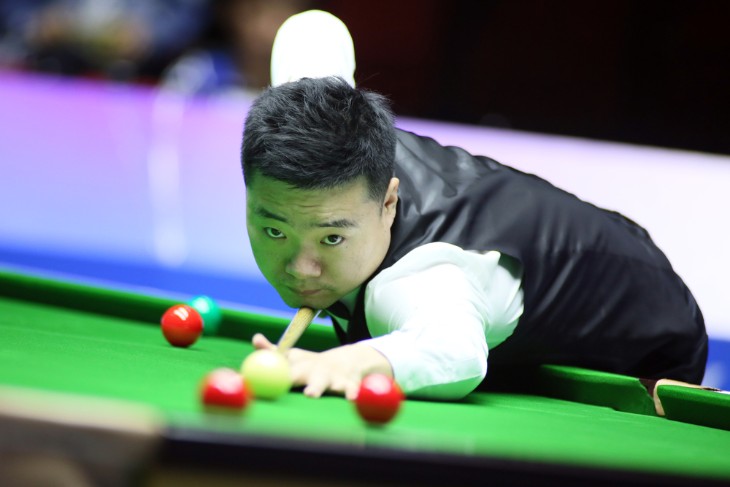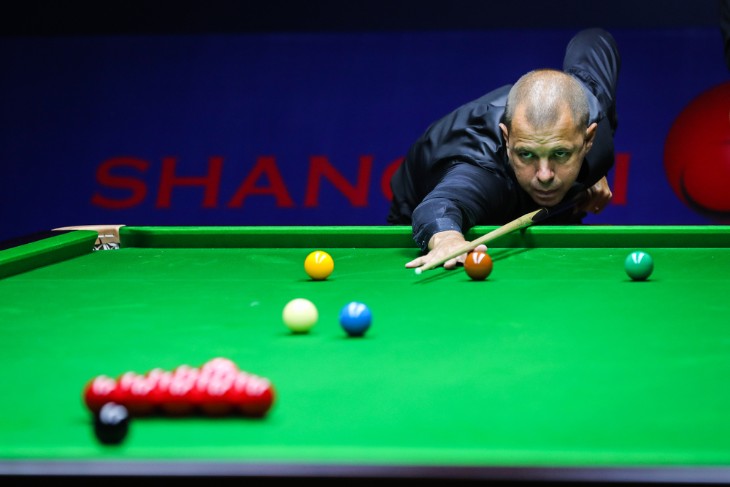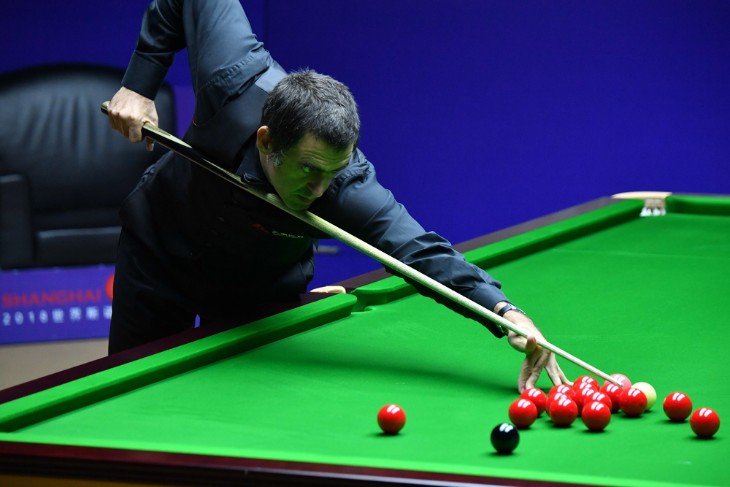- Evolution of Snooker Broadcasting: A Technical Perspective
- Pioneers Behind the Lens: The Early Days
- The Role of Directors in Shaping Snooker's Visual Story
- Sound Engineers: Crafting the Acoustics of Snooker
- Lighting the Stage: The Art of Snooker Illumination
- Camera Work: Capturing the Nuances of the Game
- The Unsung Heroes of Snooker Editing
- Commentary Teams: Voicing the Drama of Snooker
- Conclusion
In the UK, the broadcasting of snooker dates back to the 1960s, marking the start of a relationship that would profoundly shape the sport's popularity. The BBC, a pioneer in this endeavour, began showcasing snooker through programmes like 'Pot Black', a series instrumental in bringing the game into living rooms across the nation. This show was not just a sporting event; it was a cultural phenomenon that utilised the unique aspects of television to enhance the viewer's experience. Colour television, still a novelty at the time, played a pivotal role in this, as it highlighted the game's colourful nature - a feature critical to its viewer appeal.
As snooker's presence on television grew, so did its fan base. The sport's televised version offered a distinct advantage: it provided a close-up view of the players' skills and strategies, which was not possible for spectators at live events. This intimacy between the sport and its audience fostered a deeper understanding and appreciation of the game. Moreover, televised snooker matches began to influence the sport itself. Players became more conscious of the television audience, adapting their play styles for better on-screen appeal. The television era also saw the emergence of snooker celebrities, with players like Steve Davis and Alex Higgins becoming household names, thanks in large part to their television exposure. Thus, the medium of television didn't just broadcast snooker; it played a significant role in sculpting its modern form.
Evolution of Snooker Broadcasting: A Technical Perspective
The technical evolution of snooker broadcasting is a testament to the industry's commitment to enhancing viewer experience. In the early days, broadcasts were limited by the technology of the time, often resulting in less than optimal visual quality. The cameras used were bulky and offered limited mobility, constraining the angles from which the game could be captured. However, as technology advanced, so did the quality and versatility of snooker broadcasts. The introduction of smaller, more agile cameras enabled broadcasters to experiment with new angles, providing viewers with a more comprehensive view of the table and the players' tactics.
Lighting, too, underwent significant improvements. Initially, the challenge was to illuminate the snooker table adequately without causing a glare or shadow, which could hinder both players and viewers. Advances in lighting technology led to more sophisticated setups, allowing for evenly lit tables that were conducive to high-quality broadcasts. The advent of high-definition television marked another milestone in the evolution of snooker broadcasting. The superior image quality of HD brought a new level of detail to the viewing experience, allowing audiences to see the subtleties of the game like never before. This leap in visual quality was not just a technical achievement; it also heightened the emotional connection between the audience and the game, making every shot and facial expression more impactful. Thus, the continuous technical evolution in broadcasting not only transformed how snooker was viewed but also enriched the overall spectator experience, ensuring the sport's enduring appeal on the small screen.
[promotion:173]
Pioneers Behind the Lens: The Early Days
The early days of snooker broadcasting were marked by the efforts of pioneering individuals who navigated numerous challenges to bring this sport to television audiences. These pioneers were often tasked with working with limited resources and technology that was still in its infancy. Despite these constraints, they demonstrated remarkable ingenuity and creativity. One such challenge was capturing the essence of snooker, a game requiring precision and patience, within the limitations of the technology available at the time. Early broadcasts were often hindered by cameras that could not effectively capture the fast movements of the balls or the nuances of the players' techniques. Yet, these early visionaries, through trial and error, developed techniques to overcome these hurdles, setting the foundations for modern snooker broadcasting.
Another significant challenge was the need to educate the audience about the game. The pioneers behind the lens not only had to present the game visually but also had to contextualise it for viewers who might be new to snooker. This challenge was met with innovative solutions, such as integrating simple graphics and commentaries that explained the rules of snooker and strategies of the game. This educational aspect was crucial in building a loyal audience base and helped in demystifying the sport for the average viewer. The dedication and creativity of these early broadcasters played a pivotal role in popularising snooker and set the stage for its future growth and success in the realm of televised sports.
The Role of Directors in Shaping Snooker's Visual Story
The role of directors in televised snooker has been pivotal in shaping how the game is presented to viewers. Directors are responsible for deciding which shots to show, when to cut to different angles, and how to capture the drama and tension inherent in the sport. Their decisions directly impact the viewer's understanding and enjoyment of the game. In the early days, directors had to work with a limited number of cameras and angles, requiring them to be highly selective and creative in their choices. As technology advanced, directors gained access to more cameras and innovative techniques, such as slow-motion replays and aerial views, allowing for a more dynamic and engaging broadcast.
Moreover, directors play a crucial role in storytelling. A snooker match is not just a series of shots; it is a narrative with its own ebb and flow. The director's job is to capture this narrative, highlighting key moments, player reactions, and the tension of the match. This aspect of storytelling is vital in keeping the audience engaged and invested in the outcome of the game. The director must balance the technical aspects of the broadcast with the emotional and dramatic elements of snooker. By doing so, they provide a viewing experience that is not only visually appealing but also emotionally resonant, ensuring that the essence of the sport is conveyed effectively to the audience.

Sound Engineers: Crafting the Acoustics of Snooker
The contribution of sound engineers in snooker broadcasting is often understated, yet it plays a crucial role in the viewer's experience. Sound engineers are tasked with capturing the authentic acoustics of the game, from the distinctive click of balls colliding to the subtle rustle of the players moving around the table. In the early days of snooker broadcasting, capturing these sounds was challenging due to the rudimentary nature of sound recording equipment. The microphones often picked up background noise, which detracted from the purity of the game's sounds. However, as technology progressed, so did the capabilities of capturing clearer and more nuanced soundscapes. Today, sound engineers use a range of sophisticated equipment to ensure that every aspect of the game's audio is as true to life as possible, enhancing the immersive experience for the viewer.
Moreover, sound engineers play a pivotal role in balancing the various audio elements of a broadcast. This includes the ambient sounds of the venue, the commentary, and the sounds of the game itself. Striking the right balance is crucial; too much emphasis on one element can overshadow others, disrupting the viewer's engagement. The skill of the sound engineer lies in their ability to blend these elements seamlessly, creating an audio experience that complements the visual narrative. This meticulous attention to audio detail helps to convey the atmosphere and tension of a snooker match, making the viewer feel as though they are right there in the audience.
Lighting the Stage: The Art of Snooker Illumination
Lighting in snooker broadcasting is an art form that significantly influences the quality and mood of the televised game. The primary objective of lighting in snooker is to ensure that the table, balls, and players are illuminated clearly and evenly, without creating glare or shadows that could hinder the players' performance or the viewers' experience. In the early days of snooker broadcasting, achieving this balance was a formidable task due to the limited lighting technology available. Early lighting setups often resulted in uneven illumination, which not only affected the quality of the broadcast but also posed challenges for the players. As lighting technology advanced, broadcasters were able to employ more sophisticated and controlled lighting systems, greatly enhancing the visual quality of the game.
Beyond mere illumination, lighting also plays a role in setting the mood and atmosphere of a snooker match. The way the lights are set up and controlled can add to the drama and intensity of the game. For example, focusing lights on the table while keeping the surrounding area dimmer can create a 'spotlight' effect, drawing the viewer's attention to the action on the table. This not only enhances the visual appeal of the game but also heightens the sense of drama and focus. The expertise of lighting professionals in snooker broadcasting is therefore not just technical; it is also artistic, contributing significantly to the overall production value and viewer experience of the sport.
Camera Work: Capturing the Nuances of the Game
The art of camera work in snooker broadcasting is critical in capturing the subtleties and intricacies of the game. Camera operators must possess a deep understanding of snooker, enabling them to anticipate shots and player movements. This anticipation allows for smooth transitions and focused framing that captures the essence of each moment. In the early days, the limited number of cameras and their inflexibility often resulted in missing key aspects of the game. However, advancements in camera technology have revolutionised this aspect of broadcasting. Modern broadcasts utilise multiple cameras, including overhead and table-level perspectives, providing comprehensive coverage of the action. This multi-angle approach ensures that viewers do not miss any critical shots or player reactions, enhancing their understanding and enjoyment of the game.
Moreover, the skill of camera operators lies in their ability to convey the tension and strategy of snooker through their lens. By focusing on players' expressions, their careful cue alignments, and the precise movements of the balls, the camera work adds depth to the viewing experience. Close-up shots of the players' faces reveal the concentration and emotional swings inherent in the game, while slow-motion replays offer viewers a detailed analysis of complex shots. This level of detail in camera work not only educates viewers about the finer points of snooker but also helps in building a connection between the audience and the players, making the viewing experience more engaging and personal.

The Unsung Heroes of Snooker Editing
The role of editors in snooker broadcasting is another vital component often overlooked. Editors are responsible for piecing together the various camera feeds into a coherent and engaging narrative. In the early broadcasts, editing was a straightforward task due to the limited number of camera angles and the straightforward nature of the programming. However, as broadcasts became more sophisticated, so did the role of the editor. Modern snooker broadcasts involve complex editing, where editors must select from multiple camera angles, integrate replays, and weave in graphics and statistical information. This requires not only technical skill but also a deep understanding of the game to ensure that the most important and engaging aspects of the match are highlighted.
The editor's work extends beyond the live broadcast. They are also involved in creating highlight reels, promotional clips, and player profiles, all of which contribute to the overall narrative of snooker as a sport. These edited pieces play a crucial role in building excitement and interest in upcoming matches and in maintaining engagement during breaks in the live action. The skill of the editor lies in their ability to condense hours of footage into concise, compelling content that captures the essence of a match or a player's journey. This aspect of snooker broadcasting is crucial in keeping the audience engaged and in attracting new viewers to the sport, thereby playing a key role in the growth and popularity of snooker.
Commentary Teams: Voicing the Drama of Snooker
The role of commentary teams in snooker broadcasting is indispensable in bridging the gap between the on-screen action and the audience. Commentators provide a narrative that guides viewers through the intricacies of the game, offering insights, analysis, and often, a touch of humour. In the early days of snooker broadcasting, commentators were often former players or experts who brought a deep understanding of the game to their narrative. Their commentary was instrumental in educating the audience about the strategies and subtleties of snooker, making the broadcasts more accessible to a broader audience. As the sport has evolved, so has the style of commentary. Modern commentators blend technical analysis with storytelling, adding to the drama and excitement of the match. They play a crucial role in keeping the audience engaged, particularly during slower phases of the game.
Moreover, the chemistry between commentators is vital in creating an enjoyable viewing experience. Effective commentary teams combine knowledge with a rapport that resonates with the audience. They must strike a balance between providing technical insights and keeping the commentary relatable and entertaining. The best commentary teams manage to convey the tension and excitement of the game while also imparting a deeper understanding of the players' techniques and strategies. This aspect of broadcasting is not just about relaying what is happening on the table; it is about enriching the viewer's experience, making them feel part of the action, and deepening their appreciation for the sport of snooker.
Conclusion
In conclusion, the journey of snooker from a leisurely pastime to a widely watched televised sport is a narrative marked by the contributions of many unsung heroes. From the pioneering cameramen and directors of the early days to the innovative sound engineers and editors of the modern era, each has played a crucial role in shaping snooker's televised legacy. The evolution of snooker broadcasting is a testament to the power of technology and creativity in transforming how a sport is perceived and enjoyed. The continuous advancements in broadcast technology have not only enhanced the viewing experience but have also brought the game closer to fans around the world.










